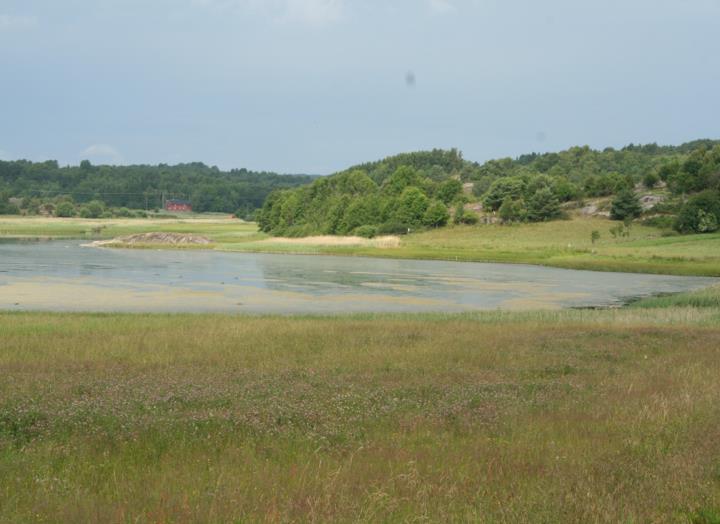Important to maintain a diversity of habitats in the sea

Shallow bay Christian Alsterberg
Marine shallow-water environments, where this research was performed, are highly productive systems organized into distinct habitats. There are sandy beaches and silty mud, areas covered by cyanobacterial mats and meadows of plants.
They represent very different habitats for microorganisms, such as bacteria and microalgae. These microorganisms perform various functions. For example, they produce oxygen, reduce eutrophication by the retention of bioavailable nutrients, and their habitats serve as nurseries for fish.
Christian Alsterberg and co-workers investigated the relative importance of habitat diversity and microbial diversity for how coastal sediments function. Although the significance of these environments has been acknowledged before, the importance of the diversity of habitats for how well they function was investigated for the first time.
The researchers set up an experiment with sediment cores combined into model ecosystems with different habitat diversity. Ecosystems with two or more habitats scored better in functionality than single-habitat ecosystems. This effect on ecosystem functioning has previously been recognized when communities differ in species diversity. Here, Alsterberg and colleagues show that the concept also applies to the diversity of habitats.
Species and habitat diversity are both threatened by human activities. Habitat homogenization is commonly observed in many ecosystems worldwide. This study demonstrates that both species and habitat diversity are important to maintain a functional ecosystem and to predict feedbacks from natural and anthropogenic perturbations. A stronger focus on habitats could be relevant from a management perspective.
Article: Alsterberg C, Roger F, Sundbäck K, Juhansson J, Hulth S, Hallin S, Gamfeldt L (2017) “Habitat diversity and ecosystem multifunctionality—The importance of direct and indirect effects”. Publicerad i den vetenskapliga tidskriften Science Advances http://advances.sciencemag.org)
Contacts:
Christian Alsterberg, christian.alsterberg@biol.lu.se, +46 (0)703- 73 00 12
Lars Gamfeldt, lars.gamfeldt@marine.gu.se, +46 (0)703- 39 39 21
http://science.gu.se/english/News/News_detail//important-to-maintain-a-diversity…
Media Contact
All latest news from the category: Agricultural and Forestry Science
Newest articles

Sea slugs inspire highly stretchable biomedical sensor
USC Viterbi School of Engineering researcher Hangbo Zhao presents findings on highly stretchable and customizable microneedles for application in fields including neuroscience, tissue engineering, and wearable bioelectronics. The revolution in…

Twisting and binding matter waves with photons in a cavity
Precisely measuring the energy states of individual atoms has been a historical challenge for physicists due to atomic recoil. When an atom interacts with a photon, the atom “recoils” in…

Nanotubes, nanoparticles, and antibodies detect tiny amounts of fentanyl
New sensor is six orders of magnitude more sensitive than the next best thing. A research team at Pitt led by Alexander Star, a chemistry professor in the Kenneth P. Dietrich…





















